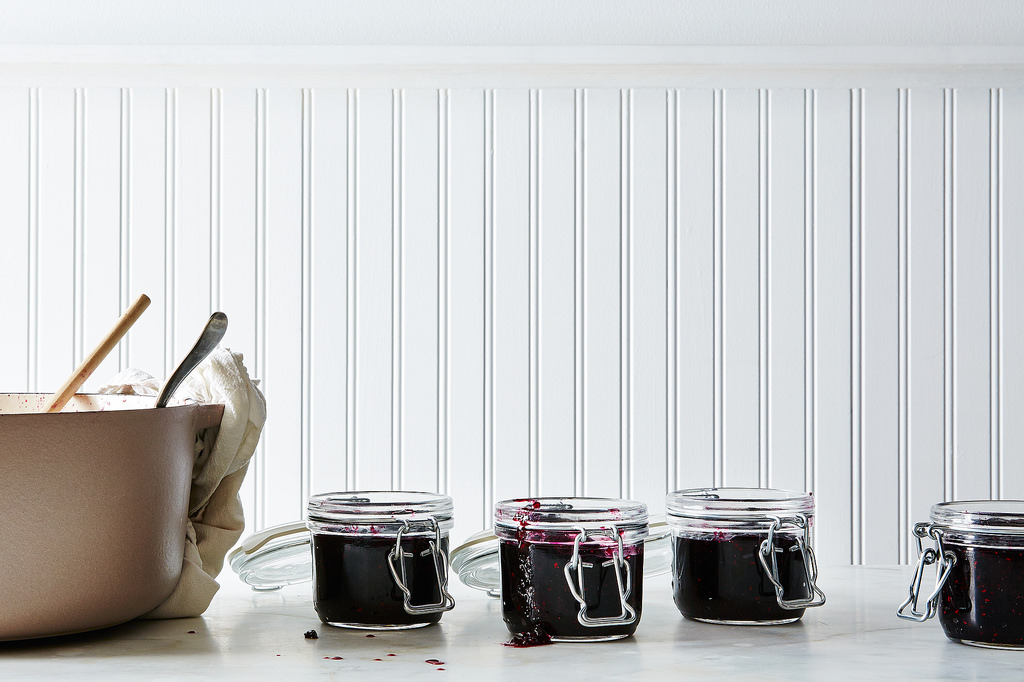
When berry season arrives, I rush to fill the preserving pot with all the varieties I can carry home. Berry jam is versatile and practical (one step to thumbprint cookies! rugelach! jam tarts!)—and downright delicious.
Raspberries, blueberries, blackberries, mulberries, olallieberries, marionberries, huckleberries, currants, and gooseberries all mature in the heat of summer, so when making preserves, choose one variety or combine a variety willy-nilly for what the French call Old Bachelor’s Jam. (What old bachelors have to do with delicious jam is beyond me, but the name suggests jam made from bits and bobs in berry boxes that were stashed in an old bachelor’s refrigerator, and I’m just fine with that.)
Here’s how to make any sort of berry jam, willy-nilly:
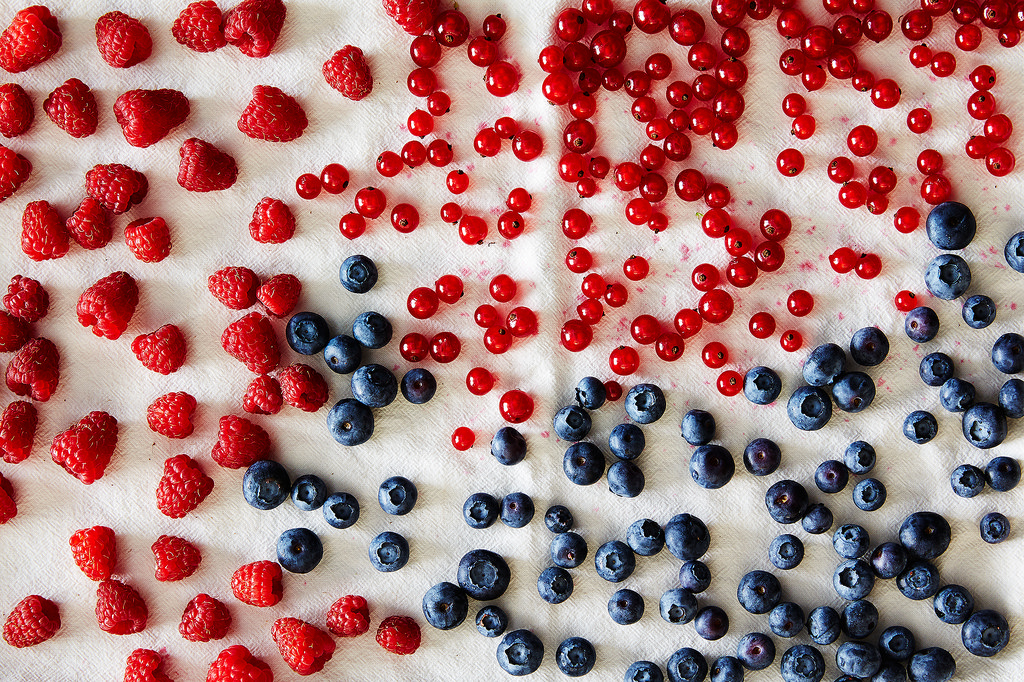
1. Pick your berries.
Always sample before buying, and decide if the berries have the bright and berry-licious flavor you expect. I used raspberries, currants, and blueberries here. Discard fruit that bears mold. Buy organic fruit so you do not have to wash it. Water makes berries soggy, which will make the flavor of your jam thin. By the same token, avoid buying berries if it has rained recently.
When you bring berries home, spread them out in a single layer on a baking sheet or plate with paper or tea towels (not terry). Pick over them to remove any stems or leaves, then refrigerate. While this method will keep the berries fresh for a few days, for the best results, start jam the same day you buy the fruit.
2. Gather the other ingredients.
In addition to the berries, you’ll need sugar and a lemon. You may want to add herbs: Lemon verbena is my favorite, but lemon thyme, lemon balm, and lemon zest are all good choices (see a theme here?). Stick with one type of herb so the flavor really comes through.
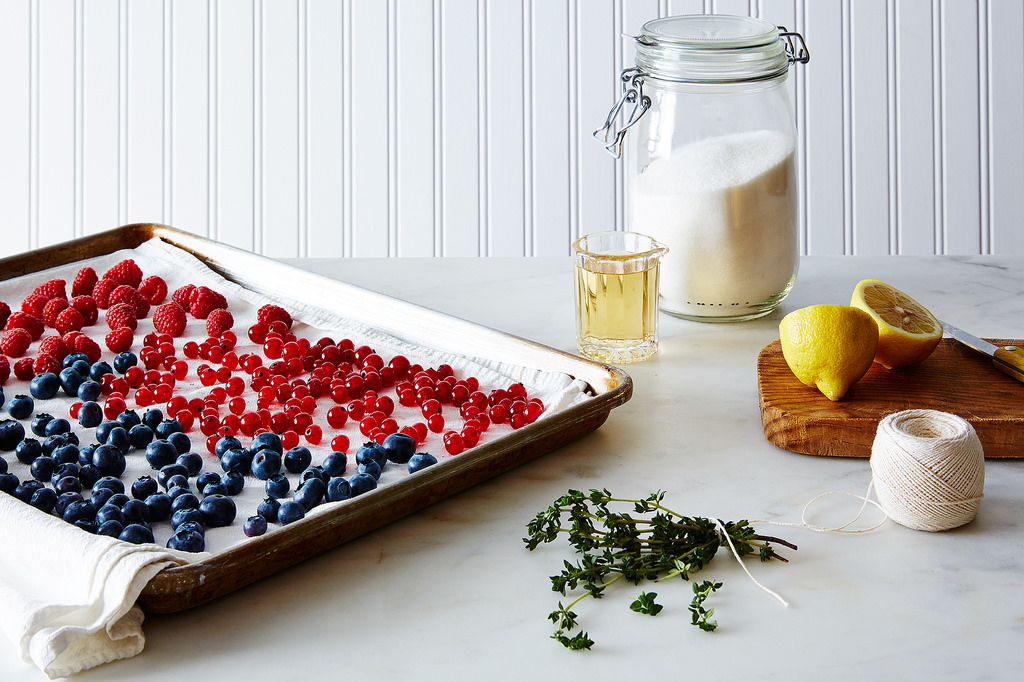
3. Make the fruit mixture.
Begin with 8 cups (4 pints) of beautiful berries and 3 cups of sugar in a big bowl. If you want herbs, add about six sprigs tied together with twine.
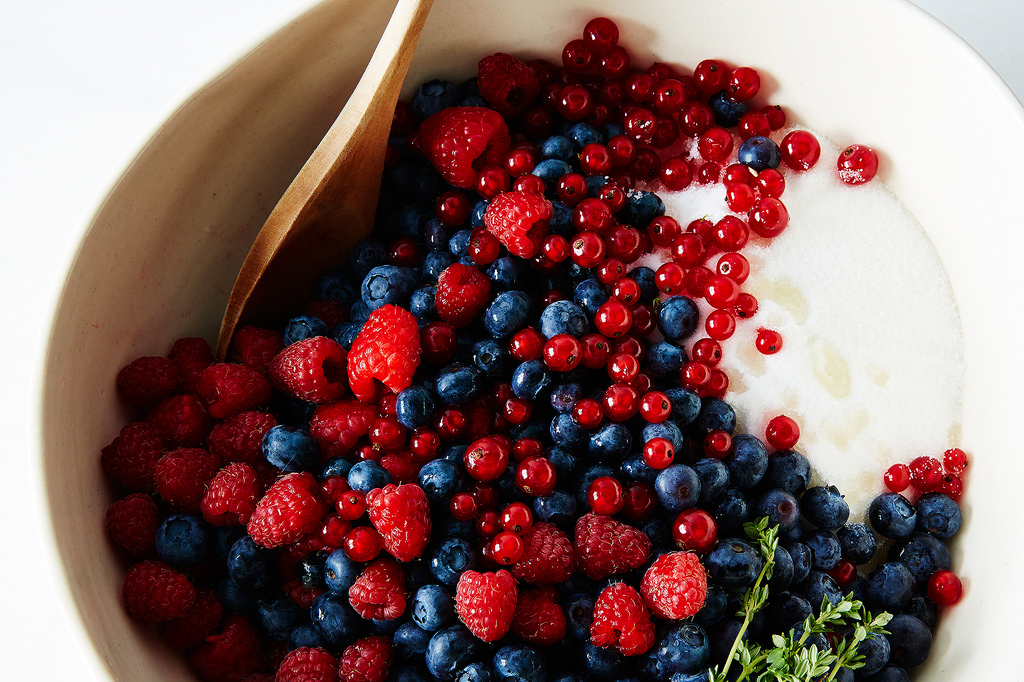
Squeeze in the juice of one lemon and stir well, dissolving the sugar in the process. If working with fruits with a sturdy skin, like blueberries, gooseberries, or currants, use a potato masher to smash some of the fruit. This will build structure in the preserves.
Cover the bowl and let the flavors develop for at least two hours on the counter, or stash the bowl in the refrigerator for a day or even two days before proceeding.
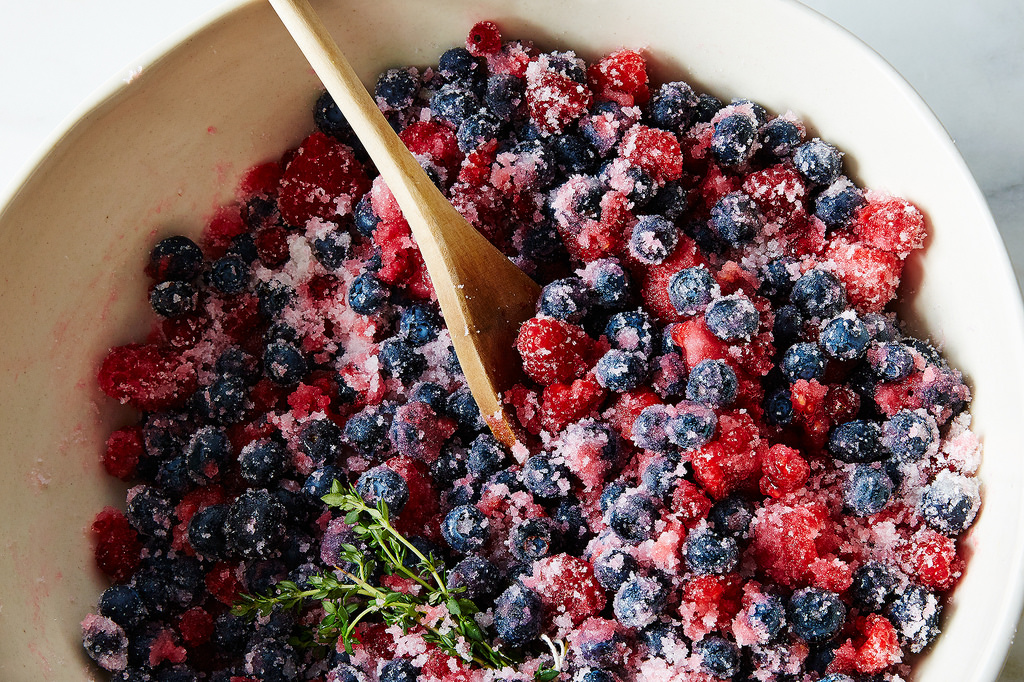
4. Separate the syrup from the fruit.
Place a colander over a preserving pot (at least 5 quarts, non-reactive, and heavy bottomed like Le Creuset) and pour in the fruit mixture, so the syrup goes into the pot and separates from the fruit. Let it drip for a few minutes, then place the colander in a bowl to catch any additional syrup. Remove and dispose of the herb bundle.
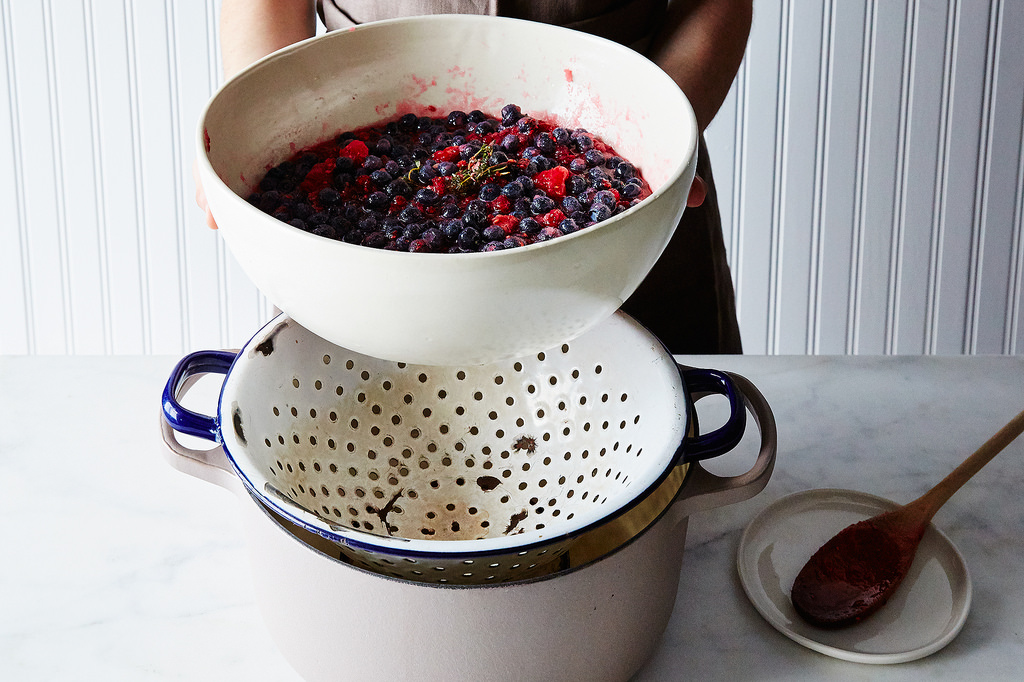
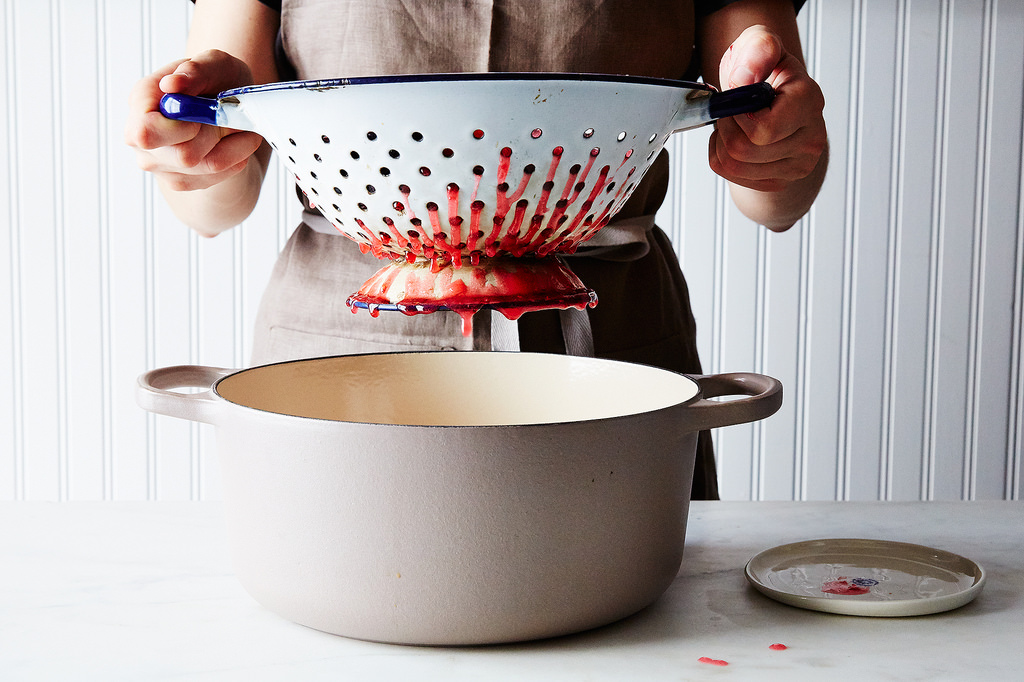
5. Cook.
Clip on a candy thermometer, turn the heat to high and bring the syrup to 220° F, the soft gel stage in candy-making terms. This jump-starts the jammy consistency while at the same time ensuring the fruit will be cooked for a limited period of time, keeping the flavors especially fresh tasting.
Some people hate the seeds in raspberry and blackberry jams. If you are on the no-seed team, run the fruit through a food mill before returning it to the preserving pot. I usually put half the strained berries through the food mill because I like some seeds but not too many.
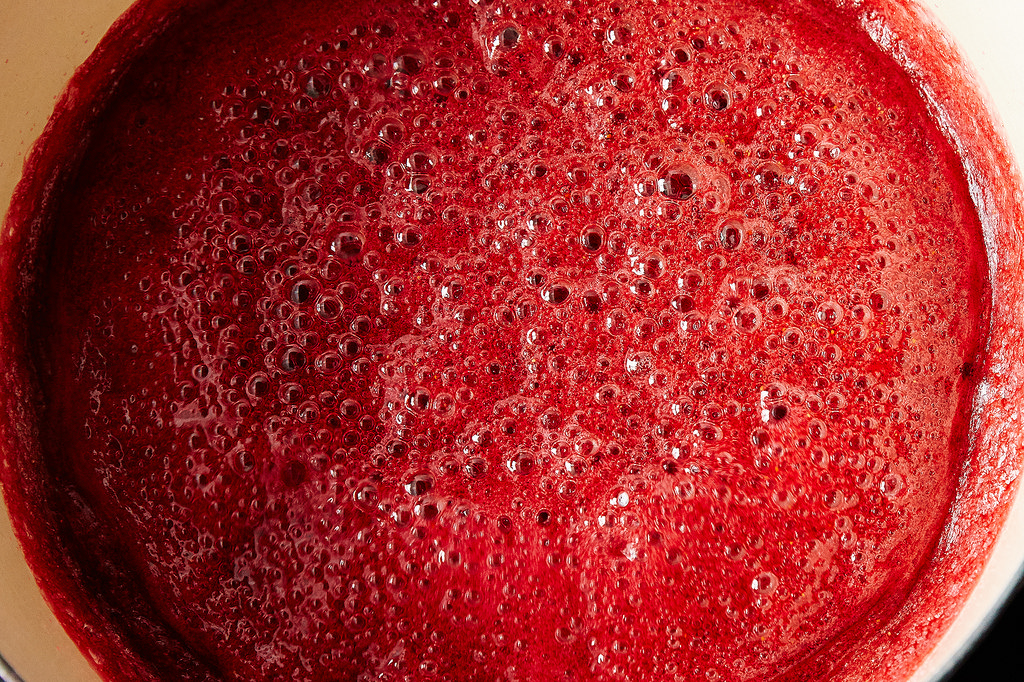
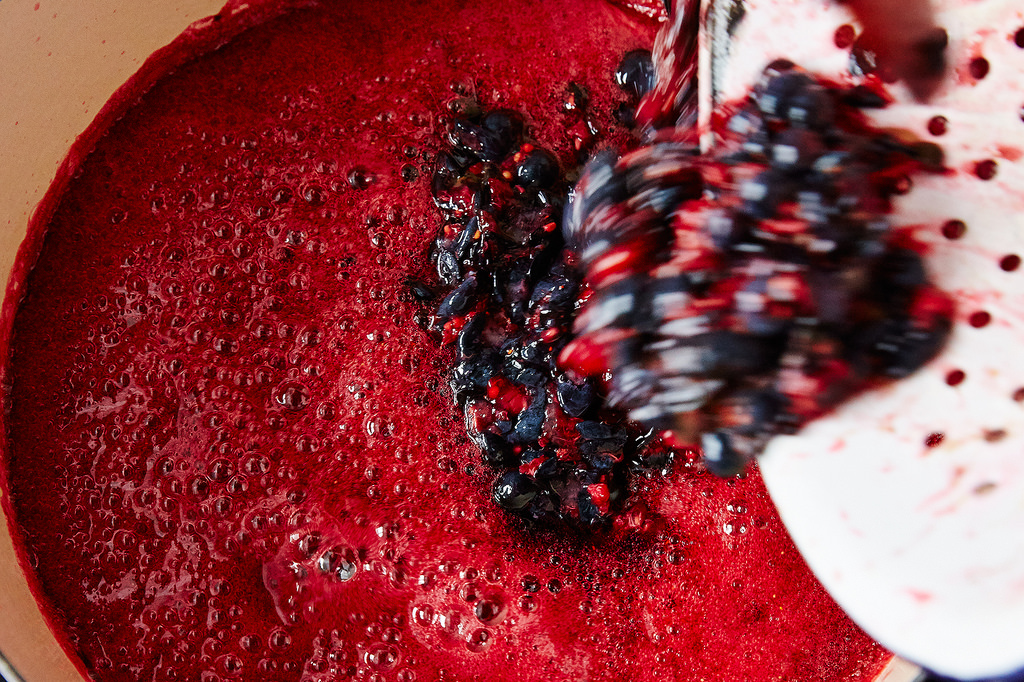
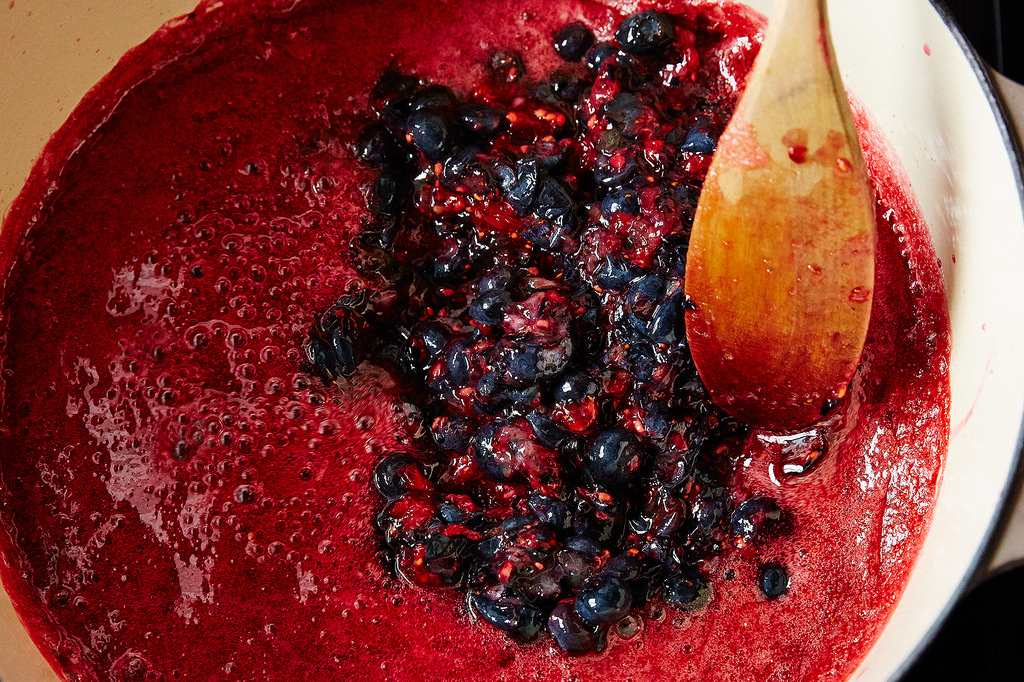
Once the syrup has reached temperature (220° F), add the berries back from the colander (and any accumulated syrup). Keep the heat high and do not stop stirring. It will come to a big boil—a scary boil. There may be spitting hot sugary jam. Be brave.
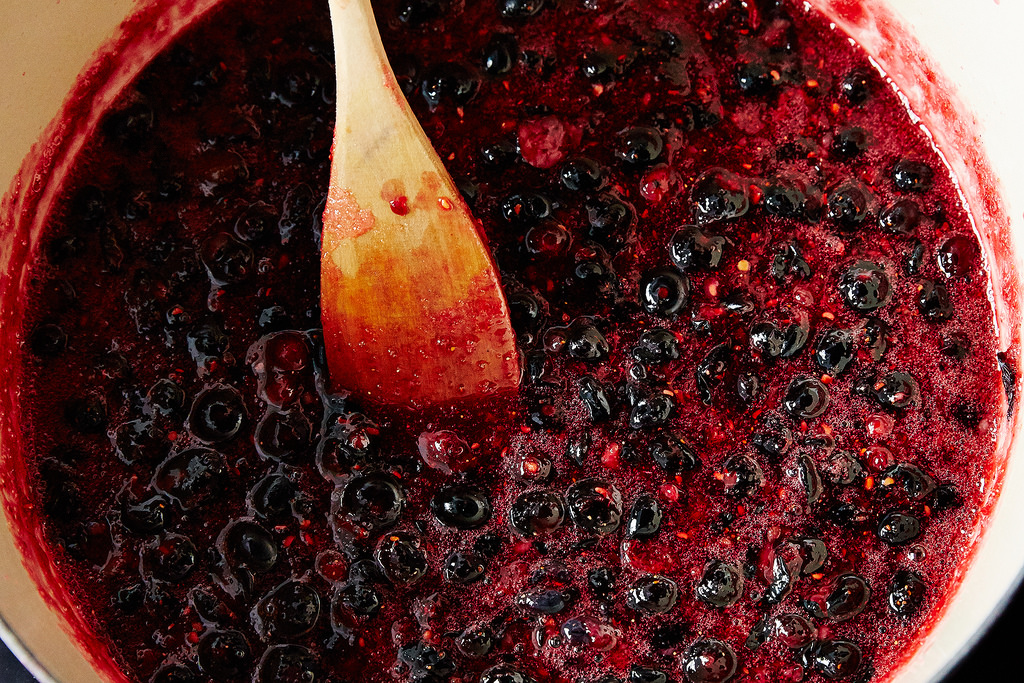
Stir until the fruit is no longer floating and there is only a little bit of foam on the surface. Remove the preserving pot from the heat, and let cool for two minutes. With a spatula or wooden spoon, gently press against the surface of the preserves: It should wrinkle slightly. (If it doesn’t, place the pot back on the heat and test again after two or three minutes at a hard boil.)
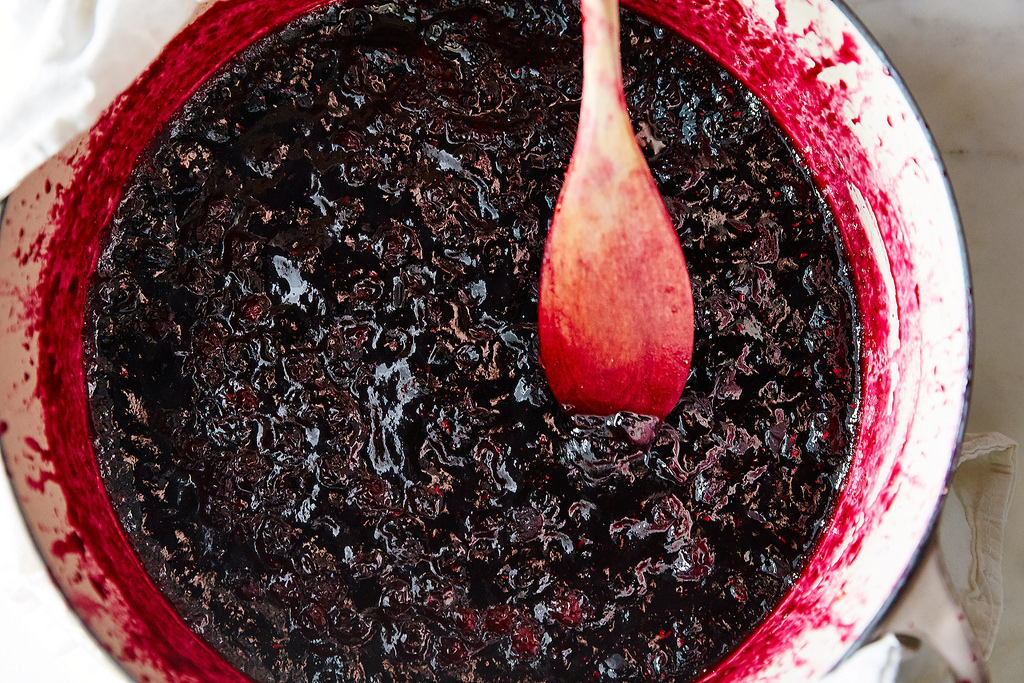
5. Add booze (if you’d like).
This next bit is completely optional, but it’s a very nice touch: Off the heat, add a slug (a heavy tablespoon) of liquor, liqueur, or sirop—I love St. Germaine or Cointreau. Add a knob of butter to clarify the gel and make the jam shiny. Stir well and thoroughly.
6. Jar.
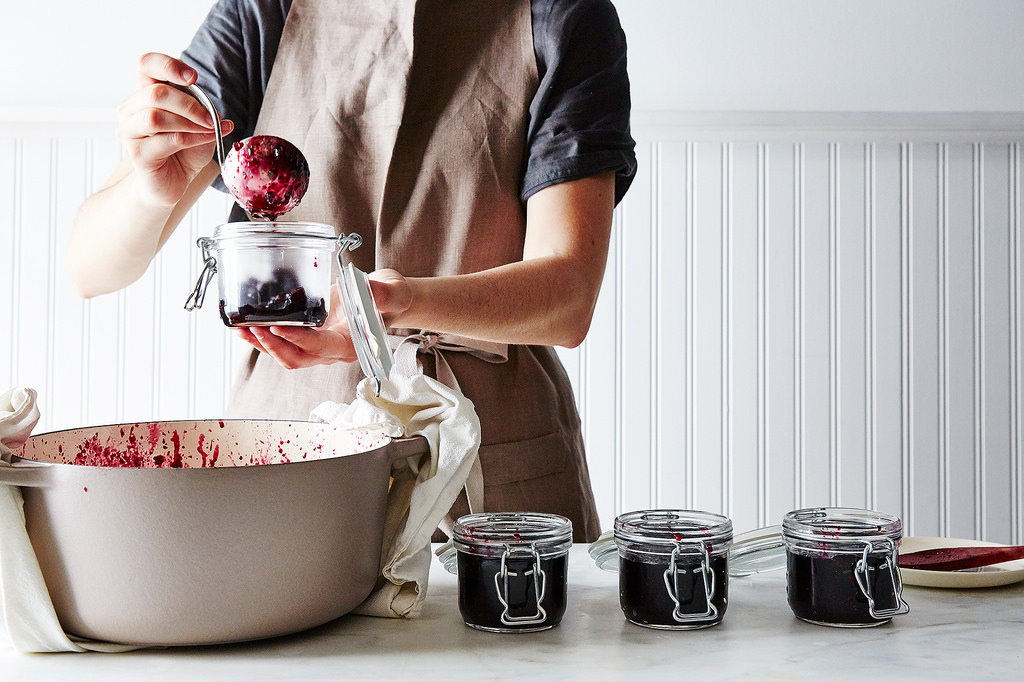
Ladle the preserves into four or five half-pint (8-ounce) jars. Store in the refrigerator for a month or so or, for shelf-stability, process the jars in a boiling water bath for 10 minutes following recommendations from the National Center for Home Food Preservation. Enjoy in yogurt, with a scone, or right out of the jar.
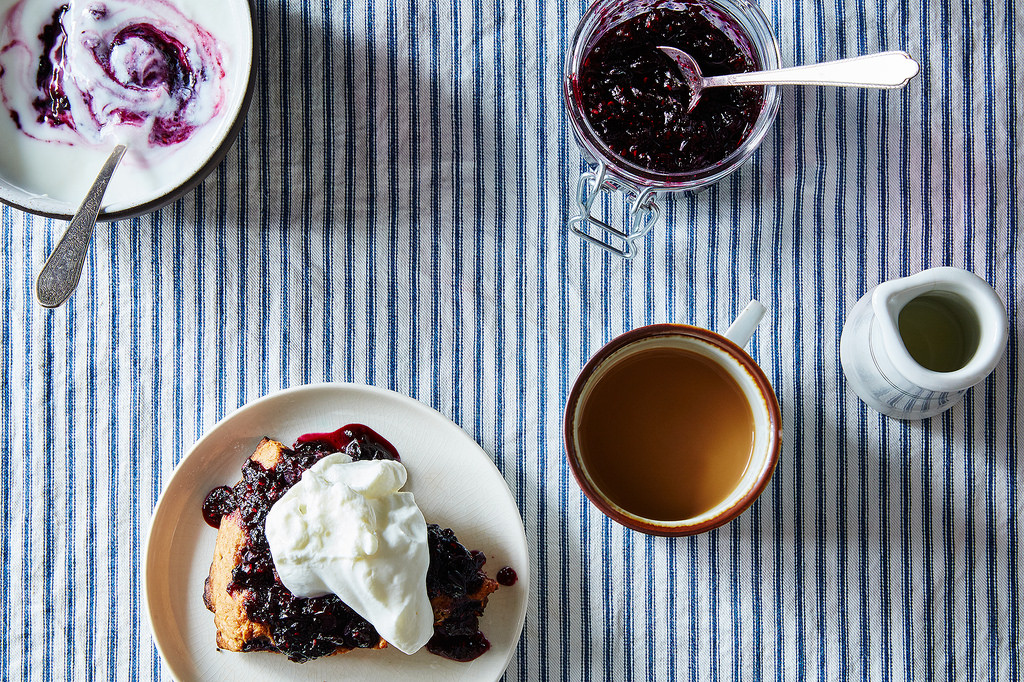
This article originally appeared on Food52
More from Food52:
More Must-Reads from TIME
- Donald Trump Is TIME's 2024 Person of the Year
- TIME’s Top 10 Photos of 2024
- Why Gen Z Is Drinking Less
- The Best Movies About Cooking
- Why Is Anxiety Worse at Night?
- A Head-to-Toe Guide to Treating Dry Skin
- Why Street Cats Are Taking Over Urban Neighborhoods
- Column: Jimmy Carter’s Global Legacy Was Moral Clarity
Contact us at letters@time.com